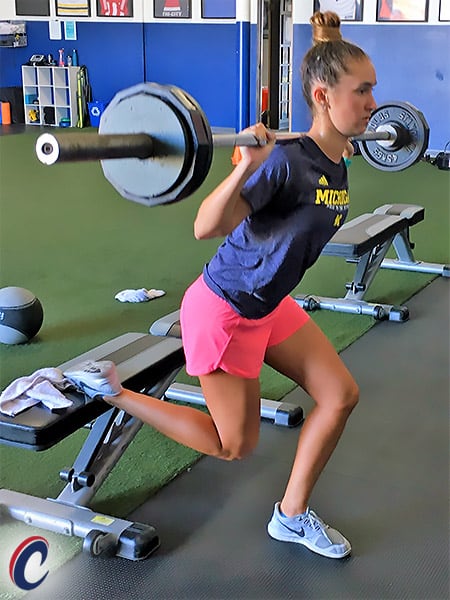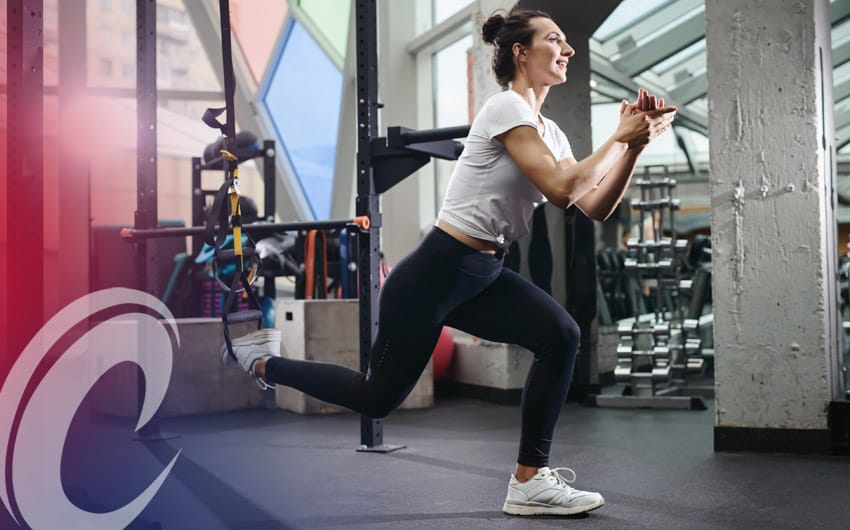Any athlete looking to strengthen their lower body is inevitably going to end up squatting and deadlifting. Athletes, coaches, and trainers alike will use these lifts and their variations as the basis for lower extremity strength training, regardless of the sport in which the athlete participates. What do these lifts all have in common? They are double-leg exercises.
 Now, take a minute to really think about your sport and the common lower extremity movements exhibited during practice and competition. Many athletes might be surprised to find out how much time they actually spend on one leg as compared to two. Going up for a layup in basketball, skating in hockey, shooting a soccer ball, and hurdling in track and field are all examples of single-leg movements common in a variety of different sports. Running is even a single-leg exercise because there is only one leg on the ground at a time.
Now, take a minute to really think about your sport and the common lower extremity movements exhibited during practice and competition. Many athletes might be surprised to find out how much time they actually spend on one leg as compared to two. Going up for a layup in basketball, skating in hockey, shooting a soccer ball, and hurdling in track and field are all examples of single-leg movements common in a variety of different sports. Running is even a single-leg exercise because there is only one leg on the ground at a time.
This isn’t to say that double-leg strength exercises aren’t effective. In fact, they’re vital to any athlete seeking to build overall lower extremity strength. However, this should serve as an encouragement to athletes, coaches, and trainers to incorporate single-leg strength and stability exercises into their workout regimens for the sake of the overall well-being of the athlete. Poor single-leg strength makes the athlete vulnerable to contact and non-contact injury when performing the above mentioned movements. Getting the athlete strong and comfortable when planting on and exploding off one foot is paramount to injury prevention.
Strength and stability go hand in hand, especially when it comes to single-leg movements. Together, they prepare athletes’ lower bodies for the aggressive and ballistic movements common to their sports and prevent unnatural twisting, collapsing, and hyperextending that result in severe lower extremity joint injuries. Single leg balance drills, lunging, and single leg box jumps are a few examples of exercises that can be included and superset into athletes’ workout routines to help strengthen synergistic muscle groups to the quadriceps and hamstrings, such as adductors, glutes, and intrinsic muscles of the foot. Such modifications to training will contribute to both injury prevention and improved athletic performance in any sport.
Bryce Gordon is an Athletic Trainer at Compete Sports Performance and Rehab in Orange County, CA and can be reached through their website at www.competeperformance.com

